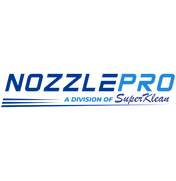Nozzle Wear Cost Calculator
Understand the true operational impact of nozzle wear. Input your spraying parameters to discover maintenance costs and efficiency losses that directly affect your bottom line.
Total system flow:
Potential savings:
If your worn nozzles are spraying at 10% over rated capacity, new nozzles could save you:
If your worn nozzles are spraying at 20% over rated capacity, new nozzles could save you:
If your worn nozzles are spraying at 30% over rated capacity, new nozzles could save you:
Understanding Your Results
The calculations above show your current system's total liquid volume and cost at normal operation. The "Potential Savings" section demonstrates how much you could reduce waste by replacing worn nozzles that are spraying beyond their rated capacity.
How wear affects your system:
- Worn nozzles develop internal erosion that increases flow rates 10-30%
- This excess flow directly increases your material costs without improving results
- The financial impact compounds over weeks and months of operation
- Spray pattern degradation occurs alongside the increased flow
- Preventive nozzle replacement maintains efficiency and spray quality
Calculator Guide
This calculator helps you quantify the financial impact of nozzle wear on your spraying operations. By understanding these costs, you can make informed decisions about maintenance scheduling and equipment investment.
How to use:
- Enter your daily operational hours and frequency
- Input the cost of your sprayed liquid per unit
- Specify your system's nozzle count and flow rate
- Review the calculated annual impact on your operations
- Use these insights to optimize your maintenance strategy

